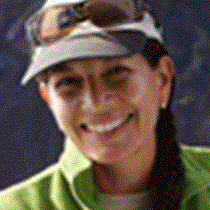Española Island
Our first full day in Galápagos was spent on Española, also known as Hood, the oldest and the southeastern-most island of the Galápagos archipelago. Before breakfast we offered our first kayak outing along the volcanic coastline of Gardner Bay, with beautiful views of the rocky shores and beach, the turquoise waters, among sea lions approaching the kayaks with lots of curiosity.
After breakfast and following a safety snorkel briefing, it was time to get all the necessary gear, masks, fins, and wetsuits for our first snorkel in the shallow waters of Gardner Bay. The minute we entered the water, six young sea lions came to inspect us and as young teenagers they started playing with us with a total lack of fear, following us the entire time we were on the water. The water was about 76°F, and with excellent visibility, so it was easy to see the schools of black stripped salemas, creole fish, brown chromis, yellow tailed razor fish, cardinal fish, Mexican hawkfish and the always timid giant hieroglyphic hawkfish and flag cabrillas among yellow cup corals, sea anemones, sun stars, and different species of sponges and sea urchins.
After about an hour or so in the water, we decided it was time to warm up on the beach, so we came to the ship to quickly drop our snorkel gear, take our cameras, and go to the magnificent white coral sand beach of Gardner Bay. Here, dozens of sea lions were basking in the sun, while lava lizards, finches, and hood mockingbirds were everywhere.
In the afternoon we visited another part of the island, Punta Suarez, one of the richest wildlife locations in Galápagos. Sea lions and marine iguanas were greeting us at the landing site and not too far in we saw the endemic Española lava lizard and racer, the endemic Galápagos dove, the three different species of Darwin finches (the warbler finch, the small ground finch, and the large ground cactus finch, all of them with their very distinctive beaks), and of course the magnificent Waved Albatross, that at this time of the year, nest only on this island. The Albatross were performing their incredible courtship rituals, while other ones were incubating eggs or gliding above us. In the distance we could see a couple of Galápagos hawks and very close to us, several Nazca boobies and blue-footed boobies either courting or incubating eggs.
Everybody was surprised by the amount of wildlife this tiny island holds, as well as the fearless behavior of the animals, which is why the Galápagos Islands are so unique and special.




